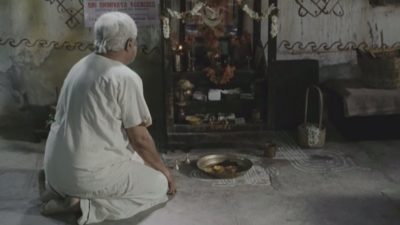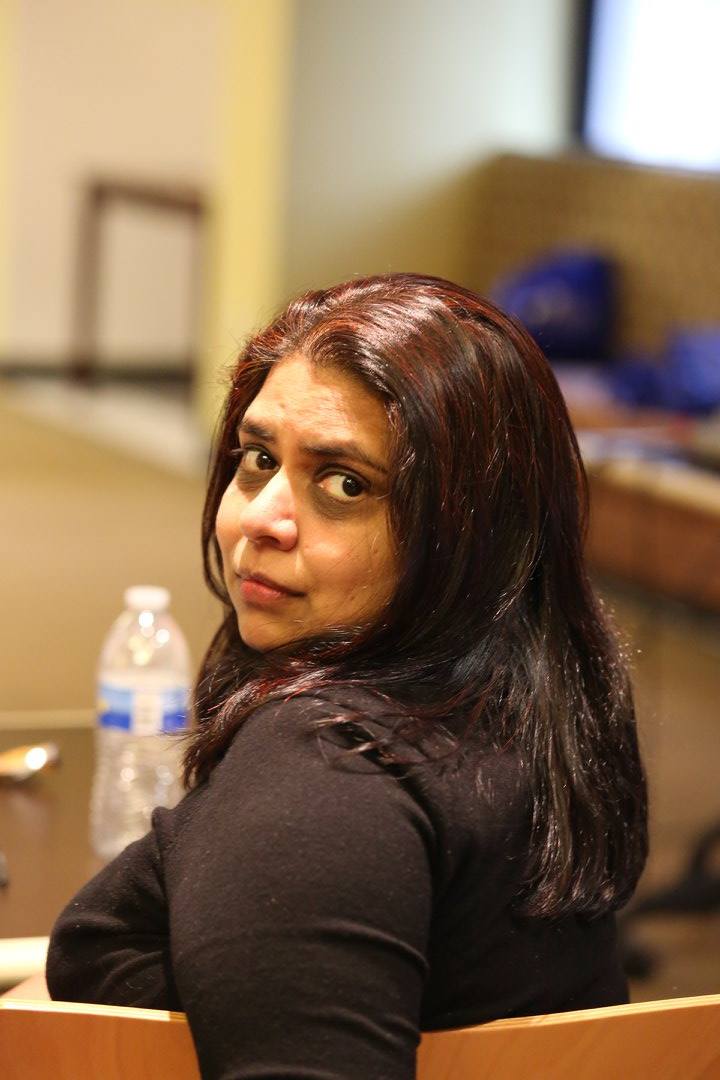
Cineflections-49
Thiladaanam (The Rite… A Passion) – 2001, Telugu
-Manjula Jonnalagadda
The function of ritual, as I understand it, is to give form to human life, not in the way of a mere surface arrangement, but in depth. – Joseph Campbell
Thilaadaanam is a film made by K.N.T. Sastry, based on a short story by Rentala Nageswara Rao. The film won the New Current Award at the Busan Film Festival. K.N.T. Sastry also won the National Award for the Best Debutant Director.
K.N.T. Sastry started his career as a film critic. His first film as a screenplay writer was B. N. Narasingarao’s Maa Ooru. He made three feature films and two documentaries. He also served on the Jury for several film festivals. His documen- tary film Harvesting Baby Girls won the Special Jury Prize at the Amsterdam Film Festival. K.N.T. Sastry never made a mainstream film.
Thilaadaanam means giving away sesame. Thila is sesame seeds, daanam is giving away. According to Indian belief when Sani (Saturn) enters a person’s horoscope, they have a period of bad luck for seven and a half years. It is believed that giving away sesame seed or oil to a brahmin is supposed to reduce the impact of Sani. Many people do not want to take those sesame seeds as they are considered the harbinger of bad luck. Those brahmins who accept this are usually considered not well learned.
The film opens with a chariot festival which is common at most temples. Subbayya aka Subramanya Sastry accepts purna kumbham, the highest honor at the festival. Subbayya is a brahmin who accepts thilaadanam for living. He also helps out as a pallbearer to earn money. He lives with his daughter-in-law. Subbayya’s son Raghu is a naxalite (communist anarchist), and is implicated in many crimes. Raghu is implicated in several crimes related to anarchy.
Subbayya is not respected by any of his colleagues as thilaaanam is considered the lowest kind of ritual. In the past, Subbayya was a scholar of repute. He leaves his life behind as his wife passes away and loses his property to debt. His relationship with his son is fraught. His son does not believe in any of the rituals that Subbayya believes in. The journey of Subbayya and his family is the plot of the film.
Subbayya is orthodox.As well learned as he is, he doesn’t want to sell his scholarship. He is also not very worldly wise and lacks skills to promote himself. He is principled in his own way. While in the film there is nothing about his other scholarly interests, in the short story he is very well read in English, Telugu, and Sanskrit. The folks who ridicule him for his profession, do come around when they learn about his scholarship.
I don’t think that the character of Padma is well etched. She has a lot of screen time, but we do not know much about her character arc. There are some flashes of what she could be. For example, her conversation with her future husband, and in the penultimate scene. She is a traditional yet an independent woman with a mind of her own.
Subbayya’s son Raghu has shunned his father’s way of life. That is one of the reasons for the conflict in his relationship. He is an anarchist, so he is useless to the family. He dreams of a better world. Whether it is possible is another question. The other characters are Subbayya’s colleagues who work in officiating different rituals. They are interested in making money more than anything else.
The film has excellent conversations about the futility of both rituals and naxalism. Some of this conversation is taken right from the short story. Rentala Nageswara Rao is credited as a dialogue writer along with K.N.T. Sastry. The story is written in 1991 when the naxal movement was alive in the state of Andhra Pradesh. By the time the film was made, it was almost gone.
The film employs melodrama as a way of telling the story. What did not work for me was how everybody was mean. Priesthood does not pay much for most parts. There are always a mix of empathetic people and people who want to get ahead at others’ cost. That balance is missing.
The best part of the film is non-conversational conversations between Subbayya and his daughter-in-law. They communicate just with their eyes. Screenplay and the direction of the film are excellent! Too bad K.N.T. Sastry hasn’t made many films.
Background score and soundtrack are fantastic! L. Vaidyanathan excels in the score by using the right kind of raga for the mood. Soundtrack is all Vedic chants.
The film boasts superb performances by H.G. Dattatreya as Subbayya and Jaya Seal as Padma. The rest of the cast is great as well. Brahmaji is the weakest as far as performances go, and he was pretty good!
Watch this film for fantastic acting, excellent directing, and great cinematic experience!
*****

Manjula Jonnalagadda is from Hamsavaram, East Godavari Dist, and lives in Los Altos, CA. She is a Techie by profession and complex by nature. She loves to read; Chekhov, Kafka, KoKu and Sankaramanchi are among her long list of favorites. She is serious about films, and a regular at a few local Film festivals. Her other interests are quizzing and hiking. While she enjoys western classical music and all kind of vegetarian food sans beans and fake meat, she seeks comfort in Carnatic music and curd rice.
